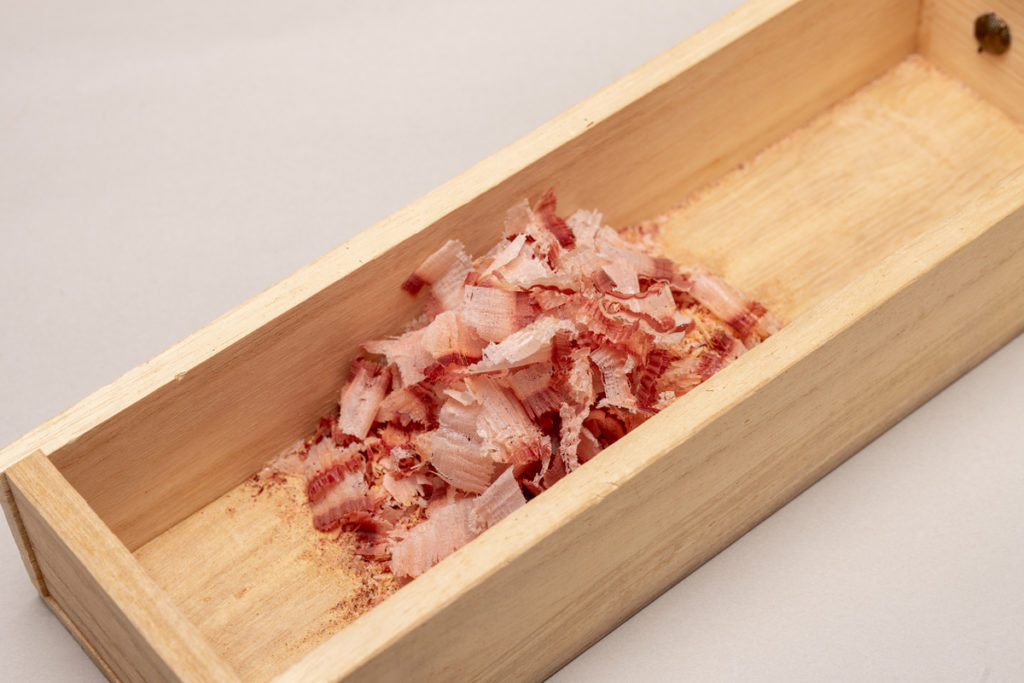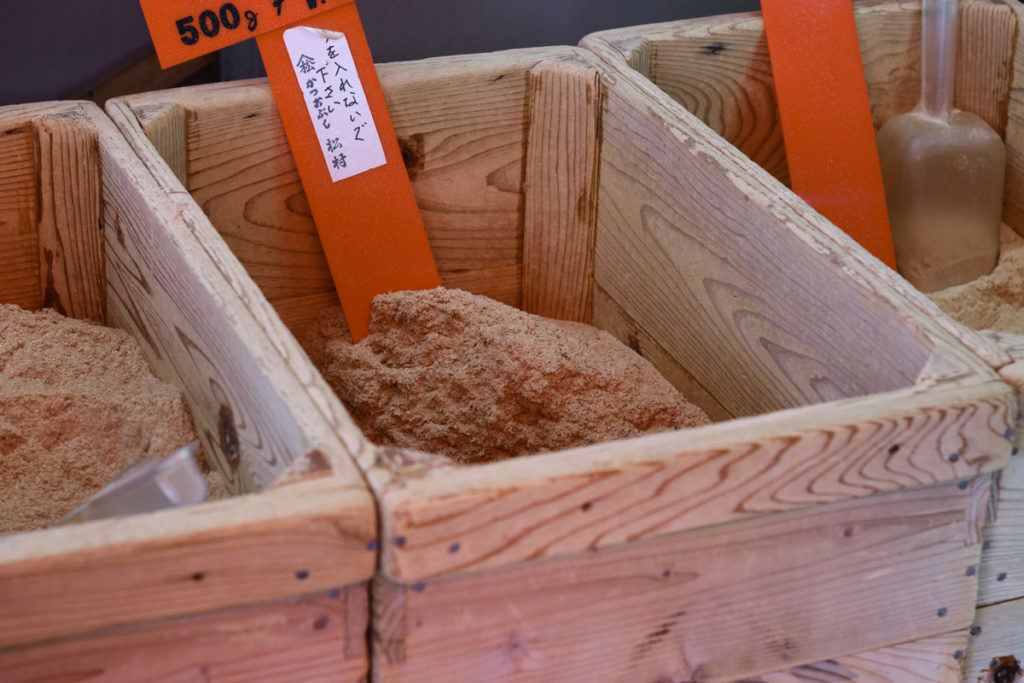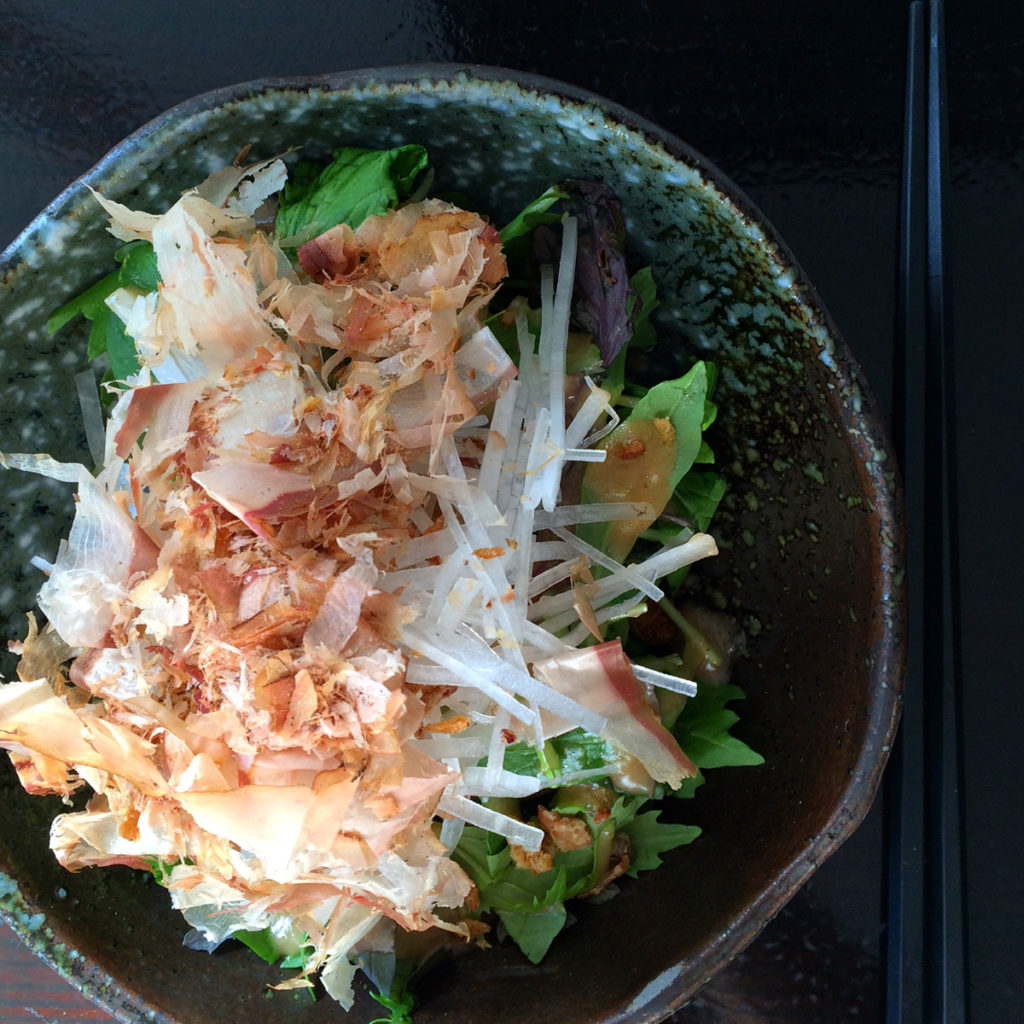Katsuo, skipjack tuna or bonito in English (two slightly different fish families but used interchangeably) is one of the most versatile fish—and yet thankfully still not overfished. It’s eaten seared over flaming straw, freshly sliced, and up and down the country is dried and turned into dashi.

According to the Ministry of Agriculture, Forestry and Fisheries, Shizuoka boasts the highest catch and export volume and value of katsuo in Japan. Katsuo is found only in the Pacific Ocean to the south as the Sea of Japan is too cold. They swim in large schools up to the north in spring to look for food, and back down with full bellies to warmer waters in the fall. The katsuo caught in summer are therefore leaner and have a more delicate taste, and those caught in winter are fattier with a fuller flavor. The fish caught in summer are more suitable for bonito flakes, the base of Katsuo dashi.
When the fish swim north, they swim close to the shore and to the surface. Given Shizuoka’s prime position and advanced fishing infrastructure, the katsuo can be caught and processed quickly, making for a fresher product to become a fresher dashi.

Once ready, the katsuo is cut into three parts. The main part, the honbushi, is categorized into back and belly parts—sebushi and harabushi respectively for male fish, and obushi and mebushi for females. Kamebushi is the leftover part around the middle section. Much like other belly meats, this part is rich and complex whereas the back is much lighter in flavor. Kamebushi is elegant yet mild, but due to its smaller size and difficulty to handle, it’s no longer so common.
The cut fish meat is then simmered, smoked and dried to make what is known as arabushi, a solid, blackened filet. This can be shaved into bonito flakes and used as is, or else can be fermented. For premium grade katsuo and dashi, a mold or bacteria is applied to the arabushi fillet to seal in the aroma. This resulting broth from soaking the flakes is clearer and thicker than its non-fermented counterpart, but the process extends the production period by one to six months.

There are two types of katsuo dashi: “Katsuo ichiban dashi” is a broth made from just bonito flakes, and ichiban dashi of “Awase dashi” which is made from a combination of bonito flakes and kombu. Dried bonito flakes contain inosinic acid and kelp contains glutamic acid, both of which produce delicious dashi on their own, but when combined together, they create a synergistic effect that doubles the flavor of the dashi. Ichiban dashi creates the foundation of Japanese cuisine by fusing two bases of umami.
In Shizuoka there are a few places where you can try dashi with only katsuobushi and even do a tasting. A must-do to continue your dashi adventure. Until next time!












